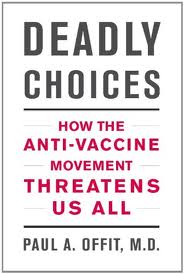February 4th, 2011 by Elaine Schattner, M.D. in Health Tips, Research
No Comments »

The current New Yorker unfolds an engaging story on childhood food allergies. As related by Dr. Jerome Groopman, there’s a shift in how some doctors think about how these conditions are best managed and, even better — might be prevented. The article feeds into recent discussion that medical science, and even dogma, too-often turns out to be incorrect.
Groopman interviews Dr. Hugh Sampson, director of the Jae Food Allergy Institute at Mount Sinai Medical Center in New York:
…“This increase in the incidence of food allergy is real,” Sampson said when we spoke recently. He cannot say what is causing the increase, but he now thinks the conventional approach to preventing food allergies is misconceived. For most of his career, he believed, like most allergists, that children are far less likely to become allergic to problematic foods if they are not exposed to them as infants. But now Sampson and other specialists believe that early exposure may actually help prevent food allergies.”
 I recommend the full read if you can get it: Groopman probes potential causes of discordant food allergy rates in children of different geographic regions. I learned a number of details on how some doctors in the U.S. use protein-breakdown methods to desensitize children to food allergies, how in Israel newly-speaking infants are said to ask eagerly for Bamba, a manufactured, peanut-containing snack (which, for the record, I don’t particularly endorse), and how in some cultures parents chew their young children’s food in a manner that might that might facilitate breakdown of complex proteins by enzymes in saliva.
I recommend the full read if you can get it: Groopman probes potential causes of discordant food allergy rates in children of different geographic regions. I learned a number of details on how some doctors in the U.S. use protein-breakdown methods to desensitize children to food allergies, how in Israel newly-speaking infants are said to ask eagerly for Bamba, a manufactured, peanut-containing snack (which, for the record, I don’t particularly endorse), and how in some cultures parents chew their young children’s food in a manner that might that might facilitate breakdown of complex proteins by enzymes in saliva.
All interesting. Of course it’s hard to know exactly what’s true in this, and the causes of allergies are likely to vary among children. There’s a randomized LEAP study (Learning Early About Peanut Allergy) in the U.K. that may provide some hard evidence on this, one way or another.
*This blog post was originally published at Medical Lessons*
February 3rd, 2011 by GarySchwitzer in Better Health Network, Opinion
No Comments »

 I have gushed praise for the Milwaukee Journal Sentinel for a long time. (Disclosure: I cut my teeth in journalism as a Journal Company employee way back in 1973. No ties since 1976.) As a mid-market newspaper facing all of the same hurdles as other newspapers, it consistently demonstrates tenacity and creativity in tackling vital healthcare issues in this country. The latest: A project called “Empty Cradles: Confronting Our Infant Mortality Crisis.”
I have gushed praise for the Milwaukee Journal Sentinel for a long time. (Disclosure: I cut my teeth in journalism as a Journal Company employee way back in 1973. No ties since 1976.) As a mid-market newspaper facing all of the same hurdles as other newspapers, it consistently demonstrates tenacity and creativity in tackling vital healthcare issues in this country. The latest: A project called “Empty Cradles: Confronting Our Infant Mortality Crisis.”
While there is a great health/medicine/science team in place at the Journal Sentinel, I believe that much of the credit goes to the top — to editor Marty Kaiser, who clearly understands that healthcare issues are among the most important his paper can report on in serving public needs. Kaiser writes:
“The Journal Sentinel today takes on an issue we have too long ignored — the death of children before their first birthday. Infant mortality is a crisis not just of public health, but of ethics and morality. The rate at which infants die in our city is unacceptable. In 2011 we will examine the problem and point to solutions.”
The project is off to a great start, taking a global picture and focusing it locally. Read more »
*This blog post was originally published at Gary Schwitzer's HealthNewsReview Blog*
January 31st, 2011 by Bryan Vartabedian, M.D. in Book Reviews, Opinion
No Comments »

 A friend suggested she was tired of hearing about vaccines. Her comment and our subsequent conversation seemed to reflect an important shift in parent sentiment: The conversation about vaccines is beginning to get somewhere.
A friend suggested she was tired of hearing about vaccines. Her comment and our subsequent conversation seemed to reflect an important shift in parent sentiment: The conversation about vaccines is beginning to get somewhere.
While much of this was born of the mainstream media’s newfound realization that the vaccine-autism connection was cooked, some of this is due to the tireless work of those like the Children’s Hospital of Philedelphia’s Dr. Paul Offit who get the story right.
As part of his passionate agenda to expose vaccine truths, he’s published “Deadly Choices: How the Anti-vaccine Movement Threatens Us All” (Basic Books, 2011). For those looking to understand the origins of anti-vaccine sentiment, read this book.
What struck me is the deep history behind the anti-vaccine movement. From Jenner’s smallpox fix to modern-day MMR struggles, Offit draws fascinating corollaries surrounding immunization that seem to defy the generations. Vaccine resistance was not born of Andrew Wakefield, but broader concerns rooted in religion, individual liberty, fear and propaganda. “Deadly Choices” puts the anti-vaccine movement in a historic sequence that reads like good suspense. I couldn’t put it down. Read more »
*This blog post was originally published at 33 Charts*
January 24th, 2011 by RyanDuBosar in News, Research
No Comments »

Eighteen percent of American believe that vaccines can cause autism, 30 percent remain unsure, and 52 percent of Americans don’t think vaccines can cause autism, according to public opinion polling done after research linking vaccines to the condition was reported as fraudulent.
While 69 percent of respondents said they had heard about an association between vaccination and autism, 47 percent knew that the original Lancet study had been retracted, and that recently the research is reported as being fraudulent.
The poll also found that 86 percent of parents who have doubts about the vaccine said that their children were fully vaccinated, compared to 98 percent of parents who believe vaccines are safe, and that 92 percent of children are fully vaccinated.
The poll was conducted after news reports were published that said Andrew Wakefield, the lead researcher of the research linking autism to the MMR vaccine, had used faked data.
More than 20 studies since Wakefield’s have disputed the association between vaccination and autism.
The online survey of 2,026 adults from Jan. 11 to 13 was done by Harris Interactive and HealthDay. (AP/Fox News, CNN, BMJ, WebMD)
*This blog post was originally published at ACP Internist*
January 20th, 2011 by PJSkerrett in Better Health Network, Health Tips
No Comments »

Good news for parents, teachers, pediatricians, and others engaged in the ongoing battle against lice: The Food and Drug Administration (FDA) just approved a new treatment for head lice in children age four and older. Called Natroba, it’s a liquid that is rubbed into the hair and allowed to sit for 10 minutes before being rinsed off. Natroba is a useful addition to the anti-lice arsenal, since some head lice have become resistant to permethrin and pyrethrins, the active ingredients in over-the-counter anti-lice products such as Nix and Rid.
Head lice are tiny insects that go by the big name Pediculus humanus capitis. They thrive in the warm tangle of human hair, feeding off blood in the scalp and breeding with abandon. A female lays eggs called nits that she attaches to strands of hair. Nits hatch after about eight days, become adults in another week or so, feed for awhile, then begin to make more lice.

CDC photo of the stages of the life of a head louse, with a penny for size comparison.
What To Do
First off, here’s what not to do: Don’t shave your or your child’s head, or coat it with petroleum jelly or mayonnaise or anything else designed to “suffocate” the parasite. You’ll probably end up with greasy, smelly, lice-infested hair.
Current guidelines from the American Academy of Pediatrics call for the use of an over-the-counter product containing permethrin or pyrethrins as a first salvo against head lice. Shampoos and rinses made with these substances are generally effective. Most treatments for head lice need to be used twice, seven to 10 days apart, along with combing wet hair with a fine-toothed nit comb. Some lice are resistant to pyrethrin and permethrin. Stronger prescription drugs, such as malathion and lindane, also work but aren’t as safe for humans. That’s where Natroba comes in. Read more »
*This blog post was originally published at Harvard Health Blog*
 I recommend the full read if you can get it: Groopman probes potential causes of discordant food allergy rates in children of different geographic regions. I learned a number of details on how some doctors in the U.S. use protein-breakdown methods to desensitize children to food allergies, how in Israel newly-speaking infants are said to ask eagerly for Bamba, a manufactured, peanut-containing snack (which, for the record, I don’t particularly endorse), and how in some cultures parents chew their young children’s food in a manner that might that might facilitate breakdown of complex proteins by enzymes in saliva.
I recommend the full read if you can get it: Groopman probes potential causes of discordant food allergy rates in children of different geographic regions. I learned a number of details on how some doctors in the U.S. use protein-breakdown methods to desensitize children to food allergies, how in Israel newly-speaking infants are said to ask eagerly for Bamba, a manufactured, peanut-containing snack (which, for the record, I don’t particularly endorse), and how in some cultures parents chew their young children’s food in a manner that might that might facilitate breakdown of complex proteins by enzymes in saliva.



 I have gushed praise for the Milwaukee Journal Sentinel for a long time. (Disclosure: I cut my teeth in journalism as a Journal Company employee way back in 1973. No ties since 1976.) As a mid-market newspaper facing all of the same hurdles as other newspapers, it consistently demonstrates tenacity and creativity in tackling vital healthcare issues in this country. The latest: A project called “
I have gushed praise for the Milwaukee Journal Sentinel for a long time. (Disclosure: I cut my teeth in journalism as a Journal Company employee way back in 1973. No ties since 1976.) As a mid-market newspaper facing all of the same hurdles as other newspapers, it consistently demonstrates tenacity and creativity in tackling vital healthcare issues in this country. The latest: A project called “












